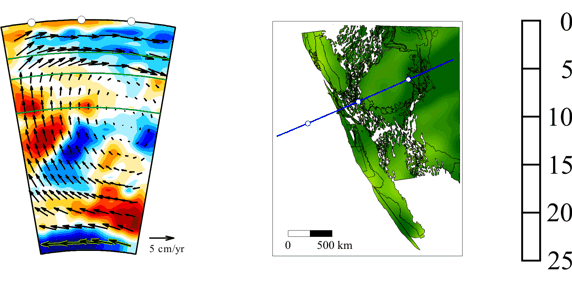
The recent (late Cenozoic) evolution of the Colorado Plateau has been the focus of a longstanding debate in the geological sciences. The intensity of this debate has significantly increased over the past couple of years with various opposing hypotheses. One of the central contentious issues in the current debate concerns the spatial and temporal variation of the uplift rate of the Colorado Plateau as a whole, and in particular the formation of the Grand Canyon. To date, majority of the published studies have assumed a passive mantle below the southwestern US and concentrated only on mechanisms that involve modification of the asthenosphere and/or lithosphere to completely explain the uplift of the Colorado Plateau. By numerically modelling the flow of the mantle driven by the best estimate of mantle heterogeneity inferred from seismic tomography, I have demonstrated that the Colorado Plateau is presently overlying a deep seated mantle upwelling (Moucha et al., Geology, 2008). This vertical flow beneath the southwestern US is driven by the superposition of an actively ascending thermal anomaly and the far-field flow driven by the sinking Farallon Slab below the eastern US.

However, inferences of paleoaltimetry from geological observations such as thermochronometry and river incision, as well as paleobotanical observations, are sensitive to change in elevation. Therefore, to try to reconcile the geological record of the southwestern US with mantle flow simulations, I modelled the space- and time-dependent evolution of dynamic topography (surface uplift) in the southwestern US over the last 30 Ma. This reconstruction is accomplished using backward mantle flow simulations based on high resolution seismic tomography (Moucha et al., GRL, 2009). These mantle flow simulations of the past provide a novel physical explanation for the recent uplift of the Colorado Plateau, and demonstrate the power of connecting mantle structure and flow, to the regional geological record.
